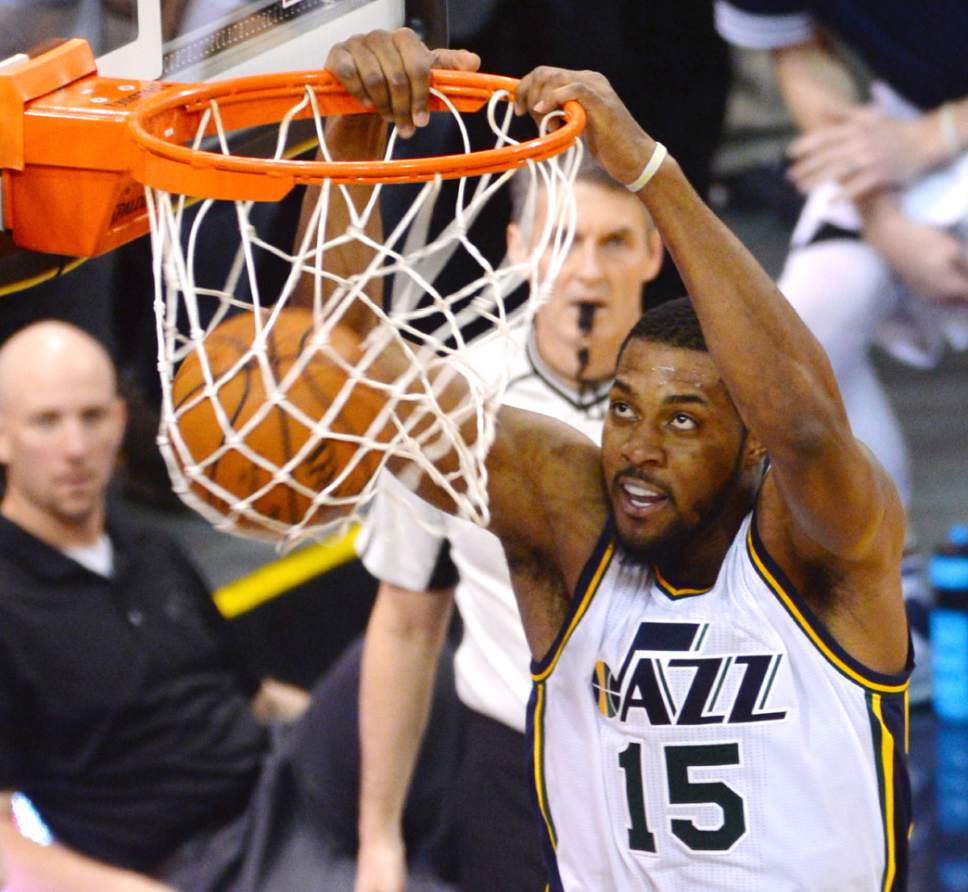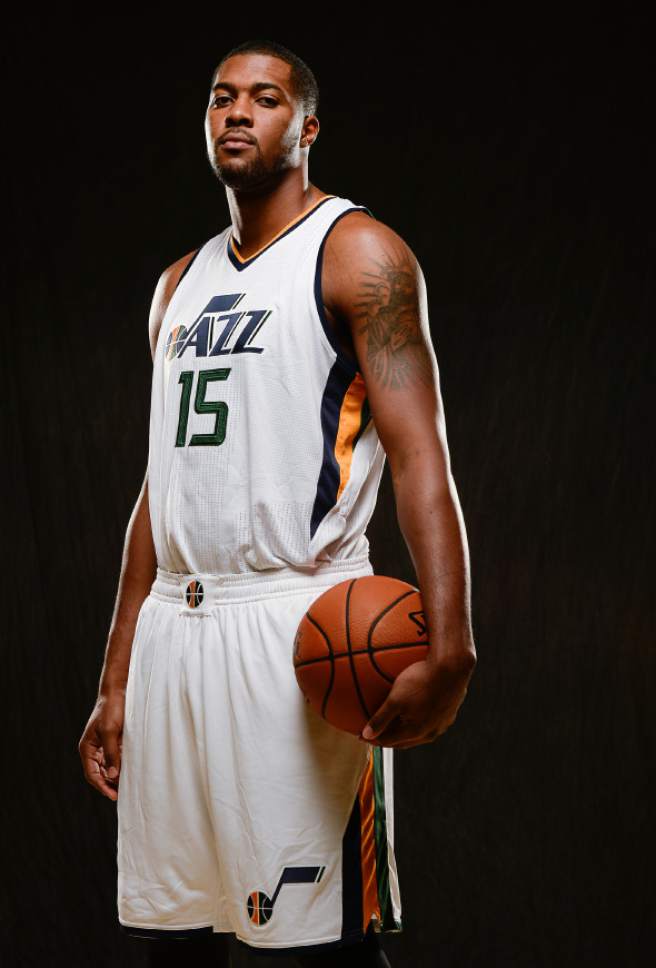This is an archived article that was published on sltrib.com in 2016, and information in the article may be outdated. It is provided only for personal research purposes and may not be reprinted.
Under the watchful eye of Utah Jazz fans, Derrick Favors has grown up.
After arriving from New Jersey as the centerpiece of a blockbuster trade in 2011, he has evolved from a shy, quiet, almost shell-shocked 19-year-old into one of the best power players in the NBA.
If the Jazz take a step forward this season and reach the Western Conference playoffs, as many are predicting, Favors will likely do much of the heavy-lifting. He is an older veteran on the Jazz's roster — a paradoxical description, to be sure, but one that describes Favors as he begins his sixth training camp in Utah.
"He's been terrific," coach Quin Snyder said. "His attitude has been very, very positive in a lot of situations and there's a focus. He's learning how to take advantage of things that are available to him offensively. Defensively, he's always a presence."
Said Favors: "Training camp is going great. … We're getting used to the new guys — getting the chemistry back going. Everything has just been great. We're trying to improve off last year."
In every way but one — he missed 20 games because of injuries — Favors comes off his best all-around season. He averaged 16.4 points and 8.1 rebounds per game and shot 51.1 percent from the field.
Those numbers suggest ex-Jazz general manager Kevin O'Connor was right.
After the trade with New Jersey, O'Connor said the Jazz ranked Favors as the top player in the 2010 draft — ahead of John Wall, who went No. 1 to Washington and Evan Turner, who was picked second by Philadelphia.
The Nets took Favors with the No. 3 pick but, eight months later, shipped him to Utah.
It was a good day for Jazz Nation, which has watched him mature into a franchise cornerstone, like teammate Gordon Hayward.
"This is my seventh year in the NBA and a lot of guys will look at me for leadership, especially the young guys," Favors said. "They look for me and Gordon for leadership and I'm trying to do a good job in training camp."
Asked how he plans to lead, Favors said, "Just talk. Communication. Help them out when they are trying to figure out something. Just lead by example. Show them how it's done. But mostly go out there and lead by example."
The Jazz, of course, upgraded their roster by adding true veterans Boris Diaw, George Hill and Joe Johnson during the offseason. So, when it comes to leadership, Favors and Hayward won't be alone.
"The three guys we got have a lot of experience — a lot of playoff experience, a lot of championship experience. It's a big help for us," Favors said. "They help out in the locker room. They help out with whatever we need — just advising us. It's a big help having George, Joe and Boris around."
Favors isn't worried about Utah's chemistry.
"We have a lot of different guys who can do a lot of different things," he said. "We can go big. We can go small. We can stretch the floor out. We can be a defensive group. We can put an offensive group out there. So there are a lot of things we can do, but that's on the coach — to try and figure out what's best for us."
Favors credits much of his growth to assistant coach Antonio Lang and the relationship they have developed over the last two years.
Lang played at Duke when the Blue Devils won back-to-back NCAA championships in 1991-92. A former second-round pick, he played for six NBA teams. He also played and coached in Japan.
"He helps me out with everything — with basketball, with life. I can call him any time," Favors said. "He'll be in the gym with me all day, every day. In the summertime, he'll come down to Atlanta and help me. … He's like a mentor — a brother to me — and I appreciate it."
Even if Lang is a former Blue Devil.
"I hate Duke," said Favors, who attended Georgia Tech for one season.
Twitter: @sluhm —
Favors by the numbers
Season Games Min. Pts. Rebs. Blks*
2010-11 22 20.2 8.2 5.2 1.2
2011-12 65 21.2 8.8 6.5 1.0
2012-13 77 23.2 9.4 7.1 1.7
2013-14 73 30.2 13.3 8.7 1.5
2014-15 74 30.8 16.0 8.2 1.7
2015-16 62 32.0 16.4 8.1 1.5











